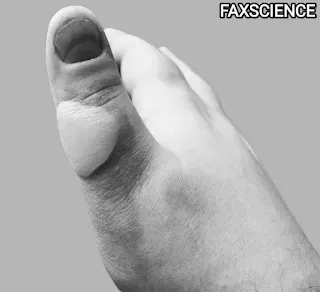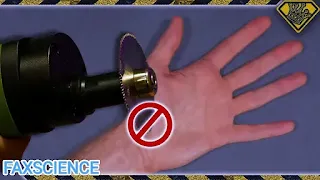CAST SAW
 |
| A CAST SAW |
 |
| USE OF A CAST SAW |
HISTORY OF CAST SAW
 |
| DR. HOMER STRYKER |
 |
| DR. HOMER STRYKER |
TYPES OF CAST SAWS
There are in general
seven kinds of cast saws in use by experts and they are as follows:
1.
Electric Cast Saws: Electric cast saws
are widely used in medical settings for the removal of casts. They operate
using an electric motor to power the saw blade's oscillating motion. These saws
are known for their efficiency and precision in cutting through cast materials,
such as plaster or fiberglass. They are designed to minimize the risk of injury
to the patient's skin while ensuring quick and safe cast removal.
2.
Oscillating Cast Saws: Oscillating cast saws
are a specific type of electric saws that work by rapidly oscillating the saw
blade back and forth. This motion allows for controlled and precise cutting,
reducing the chances of cutting the patient's skin underneath the cast. The
oscillating action also generates less heat, making it a safer option compared
to traditional rotating saws.
3.
Pneumatic Cast Saws: Pneumatic cast saws
are powered by compressed air and are used in situations where electric power
might not be feasible, such as in operating rooms. These saws offer similar
cutting efficiency as electric cast saws and are often chosen for their
reliability and safety features.
4.
Battery-Powered Cast Saws: Battery-powered cast
saws combine the portability of pneumatic saws with the convenience of electric
saws. They are equipped with rechargeable batteries, allowing medical
professionals to use them without being tethered to a power source. This type
of cast saw is especially useful in situations where mobility is essential,
such as in emergency or field medical settings.
5.
Low-Speed Cast Saws: Low-speed cast saws
are designed to minimize the risk of cutting or damaging the patient's skin
during cast removal. These saws operate at lower speeds compared to traditional
high-speed electric saws. They are particularly useful when working with casts
that are near sensitive areas or when the patient has a higher risk of skin
complications.
6.
Water-Cooled Cast Saws: Water-cooled cast
saws incorporate a water spray system to cool down the blade during cutting.
This cooling mechanism helps reduce the heat generated by friction during cast
removal, minimizing discomfort for the patient and reducing the risk of thermal
injury to the skin.
7.
Disposable Cast Saws: Disposable cast saws
are single-use devices designed for infection control and prevention. They are
made for specific cutting tasks and are discarded after use to prevent
cross-contamination. These saws are commonly used in situations where
maintaining sterility is crucial.
WORKING OF CAST SAW
 |
| WORKING OF A CAST SAW |
Also, a standard technique for employing the
cast saw entails a preliminary demonstration before the actual cast-cutting
procedure takes place. This precautionary measure ensures both the operator's
familiarity with the tool's operation and the patient's comfort and safety
during the cast removal process. Moreover, the cast saws have seen advancements
in blade materials and ergonomic designs (having to be designed for efficiency
and comfort in the working environment), which further contribute to enhanced
efficiency and patient well-being during cast removal. Medical professionals
now undergo specialised training to utilize these tools effectively, ensuring
optimal outcomes for both patients and its user.
THINGS THAT COULD POSSIBLE GO WRONG
Several issues can arise when working with a
cast saw, underscoring the necessity for its operation by individuals versed in
appropriate cast saw techniques. While it is expected that healthcare providers
possess adept knowledge of these techniques, proficiency in using this device
extends to cast technicians, physician assistants, and medical assistants as
well.
A study revealed that common complications
during cast removal stemmed from factors such as worn-out blades, inadequate
cast padding, and insufficient training or experience. The incidence of
injuries attributed to cast saws varies, typically ranging from less than 1% to
around 4%. Consequently, while the risk is minor, it remains existent.
Predominant issues encountered encompass:
m
 |
| A BURN |
 |
| A CUT |
In the event that you suspect sustaining an
injury resulting from cast removal, it is imperative to notify your healthcare
provider. Timely communication empowers your provider to proactively manage and
address issues like abrasions and burns, thereby ensuring appropriate care and
attention.
PRECAUTIONS TO BE TAKEN WHILE USING A CAST SAW
 |
| PRECAUTIONS TO BE TAKEN |
Thermal
Injury Mitigation:
1. Optimal Cast Saw Specifications: It is
imperative to utilize a cast saw equipped with appropriate specifications,
including the presence of an attached vacuum. This aids in minimizing the
accumulation of heat generated during the cutting process, thus reducing the
risk of thermal injuries.
2. Blade Sharpness: The use of a sharp blade is
crucial. Dull blades can heighten the temperature generated due to friction,
leading to potential burns. Regular inspection and maintenance of the blade's
sharpness are vital components of injury prevention.
3. Avoiding Concavities: Care should be exercised
when cutting in concave regions, as these areas can trap heat and intensify the
risk of burns.
4. Padding Considerations: Ensuring sufficient
padding between the blade and the patient's skin is essential. Padding that is
too thin or overly thick casting materials can increase the likelihood of
thermal injuries.
Preventing
Abrasive Injuries:
1. Blade Sharpness and Design: The blade's
sharpness and design play a role in preventing abrasive injuries. A
well-maintained, properly designed blade minimizes the risk of skin abrasions
during the cast removal process.
2. Mindful of Boney Prominences: When cutting
over bony prominences, such as elbows or ankles, heightened caution is
required. Adequate padding and adjusted cutting techniques can reduce the risk
of abrasions in these sensitive areas.
Adopting
Appropriate Techniques:
1. In-Out Technique: One of the core techniques
for mitigating thermal injuries involves the "in-out technique." This
approach prevents prolonged contact of the hot blade with the skin,
significantly lowering the risk of burns.
2. Avoiding Blade Dragging: Implementing the
in-out technique simultaneously prevents "dragging the blade," which
can potentially stretch and injure the skin. This technique maintains a
controlled distance between the blade and the skin.
3. Teaching Proper Technique: Educating medical
professionals about perforating rather than cutting the cast can be
advantageous. This technique focuses on controlled entry and exit points,
reducing the risk of injuries.
By diligently adhering to these precautions
and integrating appropriate techniques, cast saw users can effectively minimize
the occurrence of thermal and abrasive injuries, enhancing the safety and
comfort of both patients and healthcare providers.
CONCLUSION
In conclusion, one can say that cast saws are
special tools that help doctors take off casts without hurting people. They
were invented a long time ago and have gotten even better over the years. By
being careful and following the right steps, doctors can use cast saws safely
and help patients feel better without any worries.
REFERENCES:
Here is the
list of the websites from where I collected information and you can too, get
massive amount of information and knowledge from these sites :
THANK YOU !!! FOR THE READING TILL LAST AND I HOPE YOU ALL LIKED IT & DON'T FORGET TO SHARE THE ARTICLE!!!
